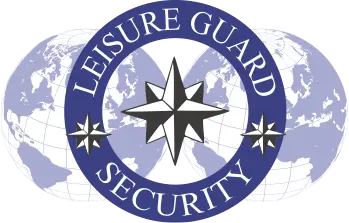A Complete Guide to Insurance, Risk, and Legal Requirements for a Vacant Property Inspection
When a building sits empty, it doesn’t stop being your responsibility, it becomes a bigger one.
Whether you’re a landlord, property manager, developer, or facilities management company, you’ve likely asked:
“How often do I really need a vacant property inspection?”
The answer isn’t just about routine, it’s about insurance compliance, risk mitigation, and legal duty of care. Miss a required inspection, and your insurance claim could be rejected. Wait too long to catch a maintenance issue, and you could be facing thousands in repairs or liability.
In this guide, we’ll break down:
- What insurers, regulators, and the law expect
- How often you should inspect different types of properties
- What can go wrong if you delay or skip inspections
- How to build a safe, compliant inspection schedule tailored to your site
Whether your property is vacant for a week or six months, this guide will help you protect your asset, and your peace of mind.
What Do Insurers Typically Require?
When a property becomes vacant, most insurance policies don’t just stay the same, they quietly switch into a different set of rules. Known as an unoccupancy clause or vacant property condition, this clause typically activates after 30 consecutive days of non-use, though it varies between providers.
Once activated, your insurer may require you to follow specific risk mitigation measures, and routine inspections are at the top of the list.
Common Insurance Policy Requirements
Here’s what many insurers expect:
- 🔁 Regular inspections every 7–14 days
- 📝 Time-stamped, photographic reports
- 🛑 Checks on fire safety, access points, utilities, and general condition
- 📁 Secure documentation of each visit (to be submitted in the event of a claim)
Insurers don’t just want to know that you’re checking the property, they want proof, and often from a qualified third party.
Example Policy Clause:
“In the event the property is unoccupied for more than 30 consecutive days, the insured must ensure that inspections are carried out at least once every 7 days and full records maintained. Failure to comply may invalidate any claim made during the unoccupied period.”
Sample UK Commercial Property Insurance Policy.
Why Frequency Matters
Insurers view vacant properties as high-risk assets, prone to water damage, fire, vandalism, or squatters. The longer these problems go unnoticed, the more costly they become, and the more likely a claim will be contested.
✅ A routine inspection every 7–14 days doesn’t just satisfy your insurer; it protects your claim if the worst happens.
Legal & Regulatory Expectations for Unoccupied Sites
Even when a property is vacant, your legal responsibilities don’t disappear, in fact, they often increase.
If someone is injured on or near your site, or if the building becomes a public hazard, you can still be held liable, whether it’s a trespasser, a contractor, or a member of the public.
That’s why regular inspections aren’t just about satisfying insurers, they’re about fulfilling your legal duty of care.
Key Regulations That May Apply
| Law or Regulation | Your Responsibility |
|---|---|
| Occupiers’ Liability Act 1957 & 1984 | Ensure the premises are reasonably safe for lawful and even unlawful visitors |
| Health and Safety at Work Act 1974 | Provide a safe environment for contractors and anyone with authorised site access |
| Regulatory Reform (Fire Safety) Order 2005 | Maintain fire exits, alarms, and risk assessments — even if the building is unused |
| Environmental Protection Act 1990 | Prevent and manage waste build-up or fly-tipping on site |
What This Means in Practice:
During periods of vacancy, you’re expected to:
- Ensure the building structure is stable
- Keep fire exits clear and alarms functional
- Secure the perimeter to prevent unauthorised access
- Regularly remove waste or hazards like fly-tipping, debris, or vandalism
- Be able to prove you’ve taken steps to manage risks
Failing to carry out or record inspections could be viewed as negligence, and that could expose you to legal claims, not just insurance issues.
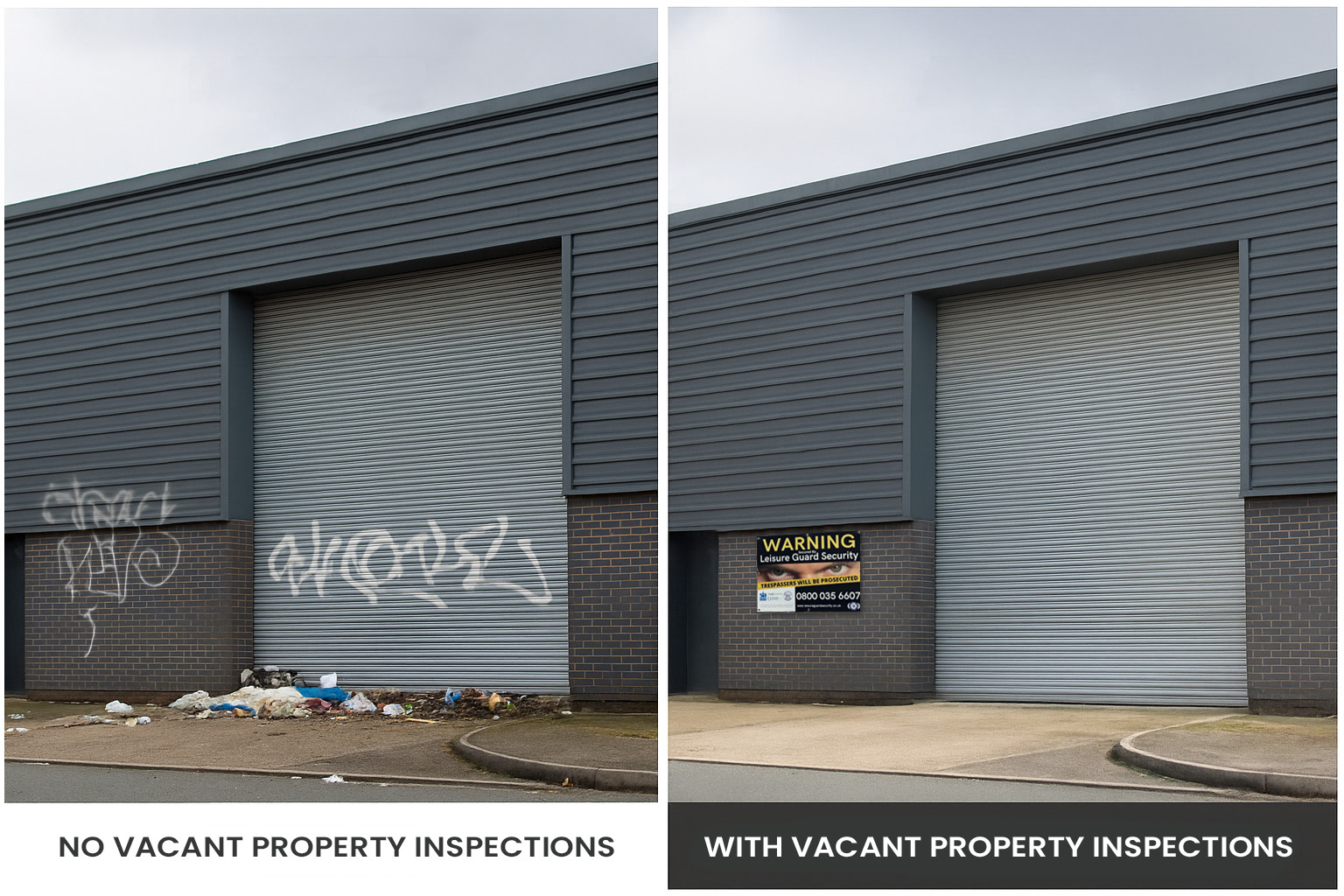
A professionally delivered Vacant Property Inspection (VPI) is more than a quick check-in, it’s a documented demonstration of your legal, ethical, and operational responsibility.
When carried out at the right frequency and recorded properly, VPIs provide:
Evidence of Duty of Care
Should a claim arise, from a trespasser injury, a contractor incident, or damage caused to neighbouring properties, you’ll need to show that you actively managed the risks.
VPIs offer time-stamped proof that your building was secure, fire exits were accessible, and no obvious dangers were left unaddressed.
Physical Deterrence
A building that’s visibly checked on a regular basis is far less likely to attract squatters, vandals, or fly-tippers, all of which could trigger legal or environmental enforcement action if left unmanaged.
Health & Fire Safety Validation
Regular inspections ensure that fire alarms are working, escape routes are clear, and no fire hazards (like piled rubbish or faulty wiring) are present. These checks help you comply with the Regulatory Reform (Fire Safety) Order 2005 and avoid fines or liability.
Regulatory Audit Trail
If your site is inspected by local authorities, HSE, or the fire service, being able to present a clear inspection record could be the difference between passing and facing an enforcement notice.
Peace of Mind for Legal Teams & Stakeholders
If a situation ever escalates to litigation or dispute, having consistent inspection logs helps legal advisors defend your position, and shows regulators, insurers, and stakeholders that you’ve acted responsibly throughout.
A missed inspection might not seem like a big deal, until a £20,000 claim is rejected or a liability case lands on your desk.
VPIs turn your duty of care into documented, defensible action.
How Risk Level Affects Inspection Frequency
While many insurers recommend inspecting vacant properties every 7 to 14 days, the ideal frequency isn’t one-size-fits-all. It should be based on your property’s risk profile, including its location, usage history, condition, and local crime rate.
By tailoring your inspection schedule to your actual risk level, you can not only stay compliant but also reduce the likelihood of serious incidents like break-ins, fires, or expensive damage.
Key Risk Factors That Influence How Often You Should Inspect
| Risk Factor | High-Risk Scenario | Recommended Frequency |
|---|---|---|
| Location | Urban areas with high crime, remote rural sites | Every 7 days |
| Season | Winter (risk of burst pipes, storm damage) | Every 7 days or after storms |
| Building condition | Poorly maintained or under renovation | Weekly |
| Property type | Commercial with valuable contents or public exposure | Weekly |
| Vacancy duration | Long-term void periods (60+ days) | Weekly with increased patrols |
| Local incidents | Recent fly-tipping, trespassing, or vandalism | Increase frequency immediately |
🔍 Real-World Example:
A property left vacant over the winter saw frozen pipes burst after a cold snap.
Because the site was only being checked monthly, the leak wasn’t discovered for over two weeks, resulting in £15,000+ in water damage and a denied claim due to inspection frequency breaches.
✅ Takeaway:
Your inspection schedule should reflect real conditions on the ground, not just the terms of a generic policy. A high-risk site with no electricity and exposed assets during winter may need twice-weekly visits, while a secured, monitored site may only require fortnightly checks.
The right security provider will help you assess and adjust your frequency based on ongoing risk, season, and insurer expectations, not guesswork.
professional vacant property inspections
Stay compliant, avoid costly surprises, and protect your property from just £30 per month + VAT.
Get started with a free consultation today.
Consequences of Skipping or Delaying Vacant Property Inspections
Failing to inspect your vacant property regularly, or at all, isn’t just a missed to-do. It’s a direct path to denied insurance claims, expensive damage, and potential legal liability. And the worst part? These consequences often unfold quietly, until it’s too late to fix them.
Below are some of the most common (and costly) outcomes when vacant property inspections are skipped, delayed, or undocumented:
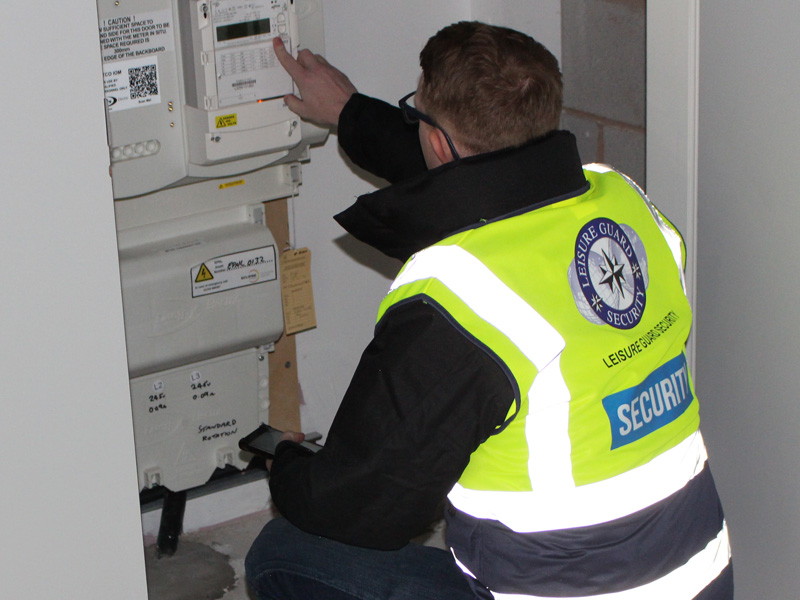
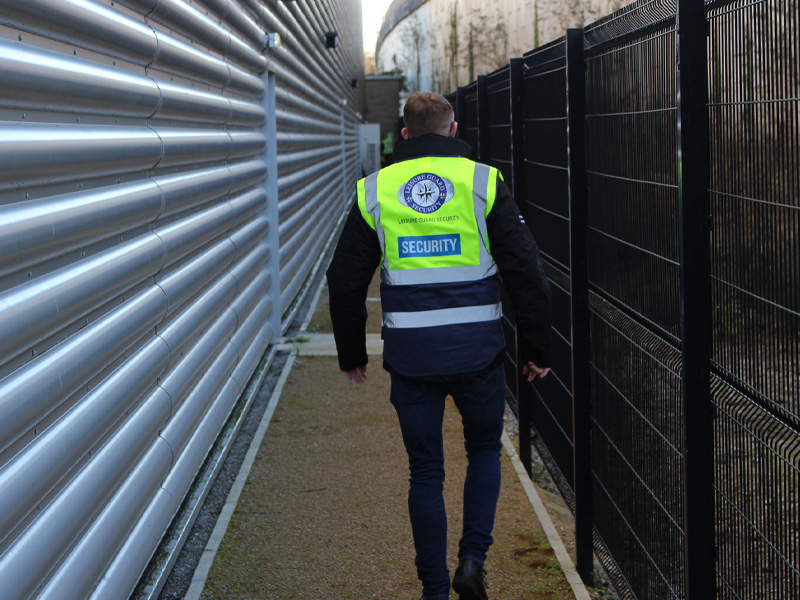
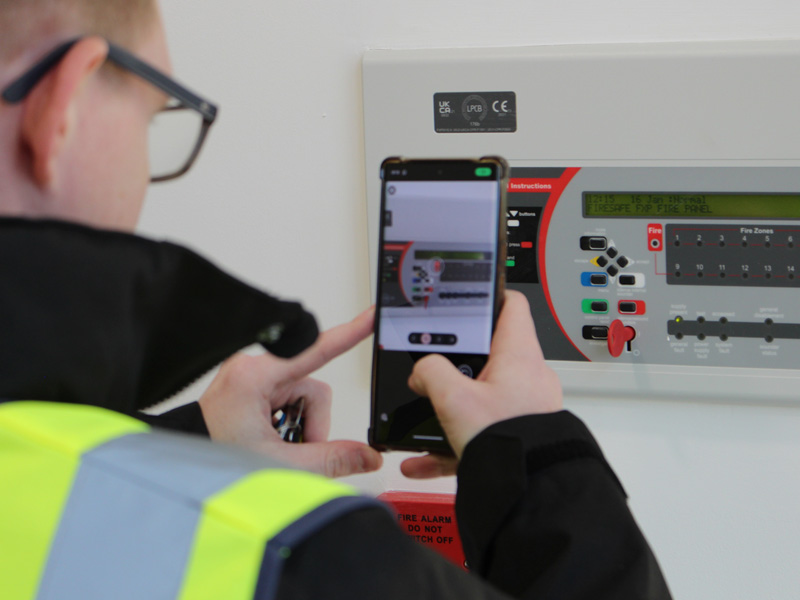
Insurance Claims Denied
Most vacant property policies require inspections at set intervals. If a loss occurs and you can’t provide:
- Inspection logs
- Photo evidence
- Dates and times
…your insurer can (and often will) refuse to pay out. Even legitimate claims, like storm damage or vandalism, can be rejected due to non-compliance.
Escalating Repair Costs
Small, undetected issues can quickly become catastrophic:
- A dripping pipe becomes a flood
- A blocked gutter causes wall rot
- Faulty wiring sparks a fire
The longer they go unnoticed, the more expensive the outcome. And without inspections, there’s no early warning system in place.
Break-ins, Squatters & Fly-Tipping
Vacant buildings attract attention. When a site appears unmonitored:
- Squatters may enter and gain legal rights
- Fly-tippers may dump commercial waste
- Vandals or copper thieves may strike
Worse, these activities can trigger environmental penalties, court costs, and damage that takes weeks (and thousands) to reverse.
Breach of Legal Duty
Neglecting inspections increases the risk of:
- Blocked fire exits
- Hazardous debris
- Dangerous structural deterioration
If someone is injured, even a trespasser, you could be held liable under the Occupiers’ Liability Act. A lack of inspections could be considered negligence in court.
Loss of Stakeholder Confidence
Clients, investors, tenants, and insurers want to know your property is being cared for. No inspection routine? That signals mismanagement, and may impact resale value, investment decisions, or tenancy agreements.
🔎 Did You Know?
According to industry reports, over 60% of commercial insurance claims for vacant properties are rejected due to a lack of documentation or policy non-compliance.
Secure Your Empty Property With A VPI Inspection
Stay compliant, avoid costly surprises, and protect your property from just £30 per month + VAT.
Get started with a free consultation today.
How to Build a Compliant, Risk-Based Inspection Schedule
Creating the right inspection schedule for your vacant property isn’t just about choosing a number of days, it’s about aligning insurance requirements, property-specific risks, and legal responsibilities into one clear, trackable plan.
A good schedule isn’t just frequent, it’s documented, consistent, and flexible enough to adapt to changes in risk, weather, or site activity.
Step-by-Step Guide to Building Your VPI Schedule
✅ 1. Check Your Insurance Policy
Start with the policy itself. Look for wording like:
- “At least once every 7 days”
- “Regular inspections must be carried out and documented”
- “Proof of attendance may be required in the event of a claim”
If it’s vague, call your insurer and ask for clarification. Many underwriters will confirm requirements via email.
✅ 2. Assess the Property’s Risk Profile
Use the following checklist:
- Is the site in a high-crime area?
- Has it been targeted in the past?
- Is it currently under renovation?
- Are utilities still connected?
- What’s the weather forecast (e.g. frost, flooding, storms)?
The higher the risk, the more frequent your inspections should be.
✅ 3. Decide Your Frequency
Based on insurer terms and your risk profile:
| Risk Level | Suggested Frequency |
|---|---|
| Low (rural, secure, monitored) | Every 14 days |
| Medium (urban, occasional activity) | Every 7–10 days |
| High (renovation, winter, prior incidents) | Weekly or twice-weekly |
| High (under renovation, winter, prior incidents) | Weekly or twice weekly |
✅ 4. Use a Professional Inspection Provider
Insurers often require inspections to be carried out by a qualified third party. Using a licensed provider ensures:
- Time-stamped photographic reports
- Checklists aligned with insurance criteria
- Full logs of each visit
- Access via secure keyholding (optional)
DIY inspections may not hold up during a claim’s investigation, especially if poorly documented. Insurers often require time-stamped photographic evidence and formal logs, which informal checks can lack.
Without verifiable proof from a qualified provider, even genuine claims can be disputed or denied.
✅ 5. Review Regularly
Your schedule isn’t static. Adjust it if:
- The season changes
- Local crime increases
- Your insurer updates the policy
- Construction or access work begins on-site
A proactive inspection provider will help you review and adapt your plan as needed.
✅ 6. Maintain a Centralised Record
Creating a compliant inspection schedule is important — but keeping accurate, accessible records of each visit is just as essential.
This documentation will be vital if:
An incident leads to a claim
An insurer or legal body requests proof of risk management
You need to demonstrate ongoing due diligence to stakeholders or regulators
🎯 Remember: The goal isn’t just to inspect, it’s to prove you did, how often, and what was checked to ensure security for your vacant property.
Signs You Should Increase Inspection Frequency
Even if your current inspection schedule meets insurance minimums, certain changes in risk can make more frequent visits not just smart, but essential.
Vacant buildings are dynamic environments. A single event, like a storm, attempted break in, or nearby fly-tipping, can shift your risk level overnight. If you’re not inspecting regularly enough to spot these developments, you may be exposed to unnecessary liability or financial loss.
Below are some of the most common signs that your inspection frequency needs to be increased, either temporarily or long-term.
Situations That Call for More Frequent VPIs
Even if your current inspection schedule meets insurance minimums, certain changes in risk can make more frequent visits not just smart, but essential.
Vacant buildings are dynamic environments. A single event, like a storm, attempted break in, or nearby fly-tipping, can shift your risk level overnight. If you’re not inspecting regularly enough to spot these developments, you may be exposed to unnecessary liability or financial loss.
Below are some of the most common signs that your inspection frequency needs to be increased, either temporarily or long-term.
| Trigger Event or Condition | Why It Matters | Recommended Action |
|---|---|---|
| Recent attempted break-in or vandalism | Indicates your property is on the radar of opportunists | Move to weekly or twice-weekly checks |
| Extreme weather conditions (storms, freezing) | Increases risk of roof damage, water ingress, burst pipes | Inspect after each major event |
| Local rise in crime or fly-tipping | Suggests increased area risk to vulnerable sites | Increase inspection frequency + patrol presence |
| Construction or maintenance paused | Site may have exposed materials, unsecured access, or hazards | Increase inspections to weekly |
| Long void period (60+ days) | Higher risk of structural deterioration or trespass | Maintain weekly inspections |
| Neighbouring property issues | Fire, vandalism, or fly-tipping nearby can quickly spread risk | Inspect within 24–48 hours |
| Insurance renewal approaching | Insurers may request evidence of risk mitigation and diligence | Conduct more detailed inspections |
Best Practice Tip:
“When in doubt, inspect more, not less.”
While insurers often state the minimum required frequency, they rarely penalise over-inspection. A more proactive schedule gives you better oversight, strengthens your claims position, and reduces the chance of unexpected issues slipping through the cracks.
✅ Final Thoughts: Stay Protected, Stay Compliant, Stay Informed
How often you inspect your vacant property isn’t just a box-ticking exercise, it’s a critical part of protecting your asset, your insurance cover, and your legal responsibilities.
Whether you manage a single building or a portfolio across multiple sites, your inspection frequency should reflect real-world risks, not just a line in your policy.
At Leisure Guard Security, we help property owners and managers:
- Understand their insurance requirements
- Create tailored inspection schedules
- Deliver fully compliant, documented inspections
- Prevent costly issues before they escalate
Frequently Asked Questions About Vacant Property Inspections (VPIs)
How often should you inspect a vacant property in the UK?
Most insurers require inspections every 7 to 14 days, depending on the property type and associated risks. Some policies may require weekly checks, especially during colder months or in high-risk areas.
Can I inspect the property myself to meet insurance requirements?
In some cases, yes, but many insurers prefer or require inspections to be carried out by a qualified third party. Using a licensed provider ensures the inspection is documented, compliant, and holds up in the event of a claim.
What counts as a compliant property inspection?
A compliant inspection typically includes:
Checks on access points, fire safety, utilities, and hazards
Time-stamped photographic reports
Documentation of the inspector, date, and site condition
Frequency aligned with your insurance policy
What happens if I miss an inspection window?
Missing even one required inspection can give insurers grounds to:
Reject a claim
Void your cover
Increase your premiums at renewal
It’s vital to stay on schedule and keep proof of every visit.
What factors influence how often I should inspect?
Key factors include:
Local crime or vandalism rates
Building age and condition
Whether utilities are still active
Weather (e.g. winter = higher risk)
Length of vacancy
Adjust your schedule if any of these change.
Do inspections help with legal compliance?
Yes. Inspections support your duties under:
Occupiers’ Liability Act (1957 & 1984)
Fire Safety Order 2005
Health and Safety at Work Act
By documenting each visit, you can prove due diligence if an incident occurs.
How much do vacant property inspections cost?
Prices start from around £30/month + VAT for basic inspection packages, depending on frequency, location, and site complexity. Higher-risk properties may require more frequent or specialised checks.
What should be included in a vacant property inspection report?
A professional inspection report should include:
Time and date of inspection
Inspector name and ID
Summary of findings
Photographs of all key areas
Notes on hazards, damages, or irregularities
Recommendations or required actions
This documentation is essential for insurance and legal purposes.
Are inspections needed if I have CCTV installed?
CCTV helps monitor activity, but it’s not a substitute for physical inspections. Insurers often require in-person verification to ensure the building is structurally sound, secure, and hazard-free. CCTV can’t detect leaks, blocked exits, or internal damage.
Who is responsible for inspecting a vacant property — the owner or the manager?
Legally, both can carry responsibility, depending on the terms of the lease or management agreement. However, whoever holds duty of care (usually the owner or managing agent) is expected to ensure inspections are carried out and recorded.
Can I increase inspection frequency during high-risk periods?
Yes, and you should. If your area is experiencing severe weather, construction, or increased crime, ramping up inspections (e.g. to twice per week) is a smart way to protect your asset and reassure insurers.
Do inspections cover the exterior only, or the interior too?
Professional VPIs cover both interior and exterior. This includes access points, utilities, fire exits, signs of vandalism, structural concerns, and any water or weather-related risks inside the building.
What’s the difference between a vacant property inspection and a general property check?
A VPI is a formal, documented inspection designed to meet insurance and legal standards. General property checks may be informal, undocumented, or insufficient in the event of a claim. Insurers prefer the former — and often require it.
How can I prove to my insurer that I’ve inspected the property?
Provide:
Time-stamped, geo-tagged photographs
Inspection logs or reports
Officer ID and credentials (if done by a provider)
Consistent recordkeeping that matches policy terms
This proof is critical during a claims investigation.
Can I schedule inspections in advance?
Yes. At Leisure Guard Security, we help clients create automated inspection schedules based on:
Policy conditions
Site risk profile
Seasonal risk
You can even bundle inspections with keyholding and alarm response for complete coverage.
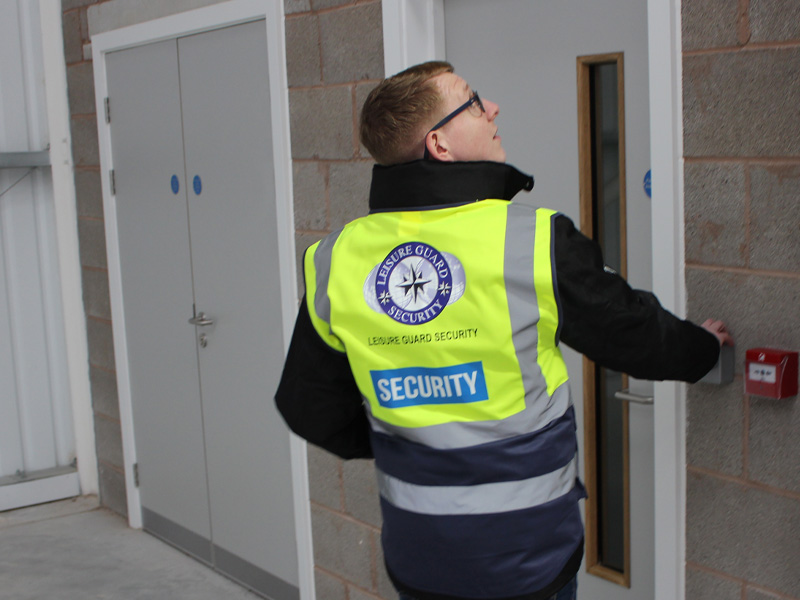

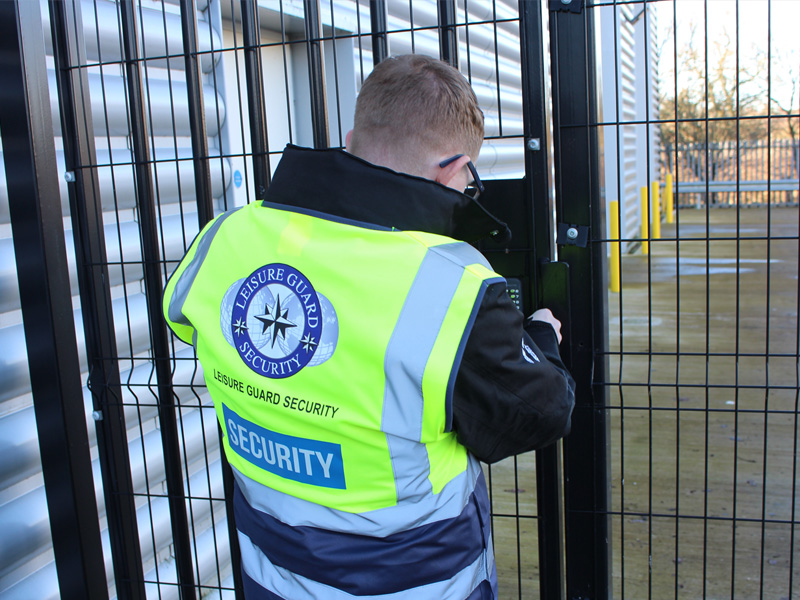
Vacant Property Inspections You Can Rely On
At Leisure Guard Security, we specialise in delivering insurance-compliant Vacant Property Inspections (VPIs) that help you protect your asset, maintain compliance, and prevent costly surprises — all without the stress of managing it yourself.
Starting from just £30/month + VAT, our professional VPI service gives you complete peace of mind that your property is being actively monitored, documented, and protected while it’s unoccupied.
Ready to Protect Your Property?
Don’t wait until it’s too late.
Whether your site is vacant for weeks, months, or indefinitely, we’re here to keep it secure and compliant, so you don’t have to worry.
Call us on 0800 035 6607
Email info@leisureguardsecurity.co.uk
Or request a free VPI consultation in the form here
